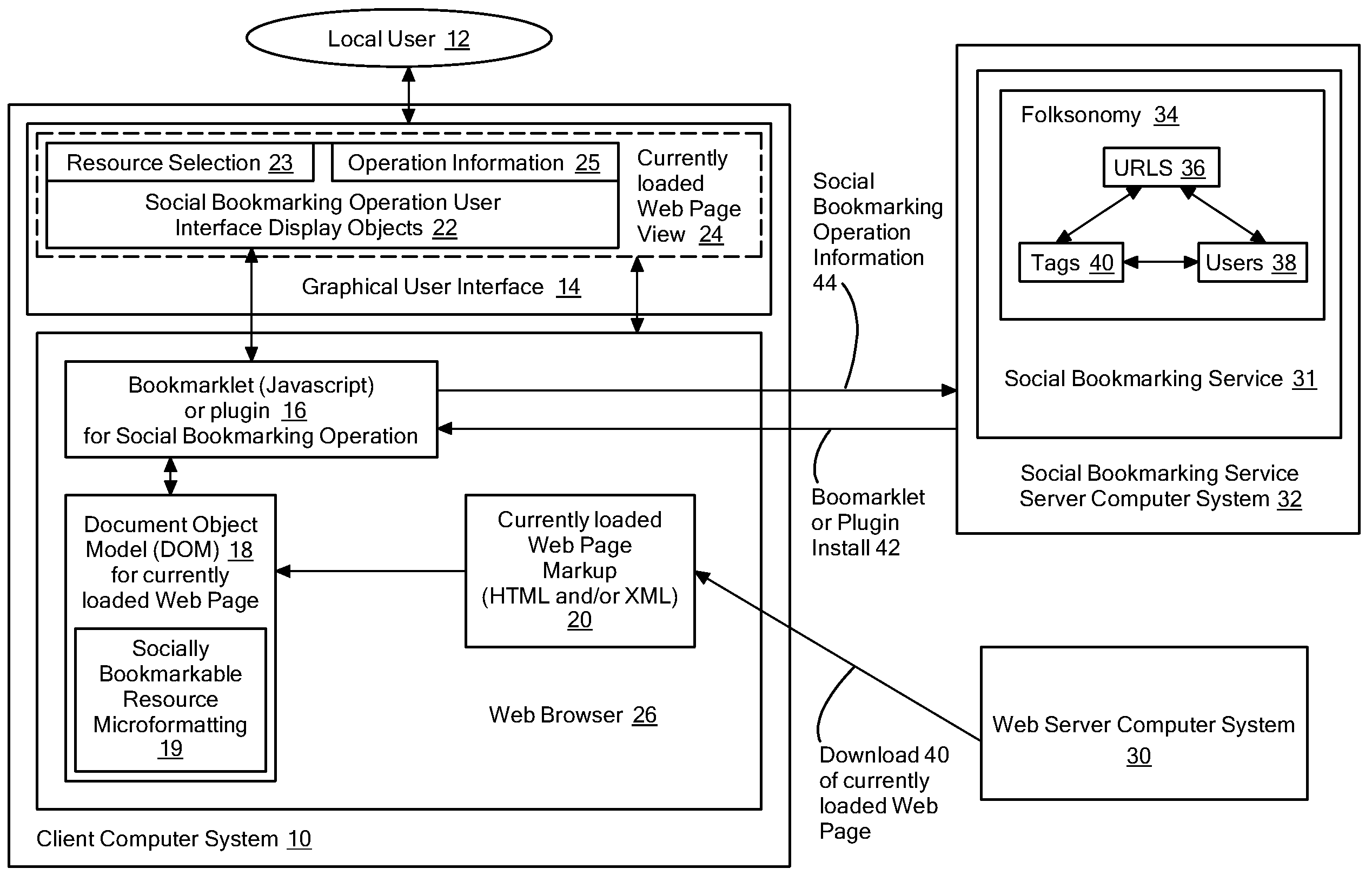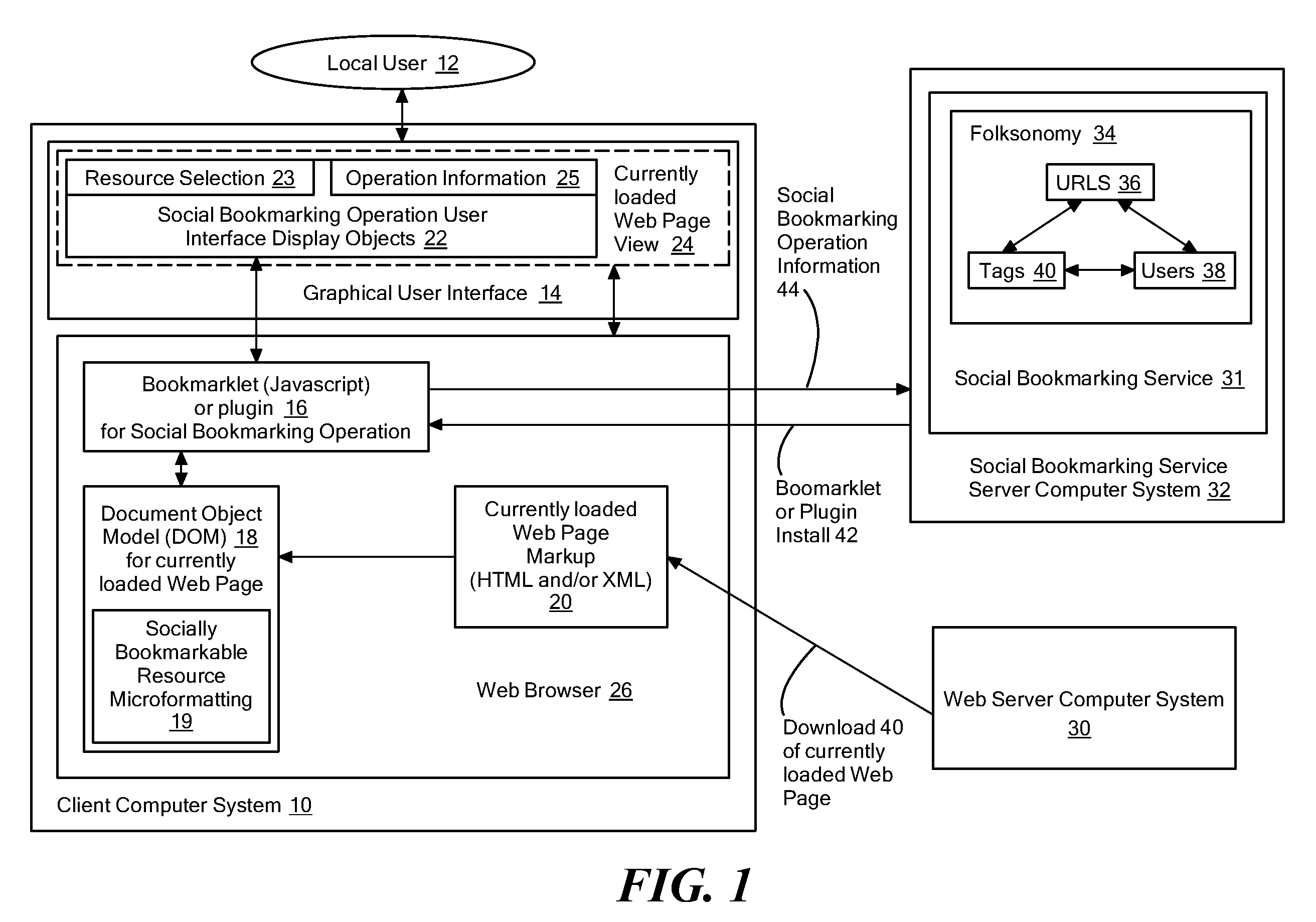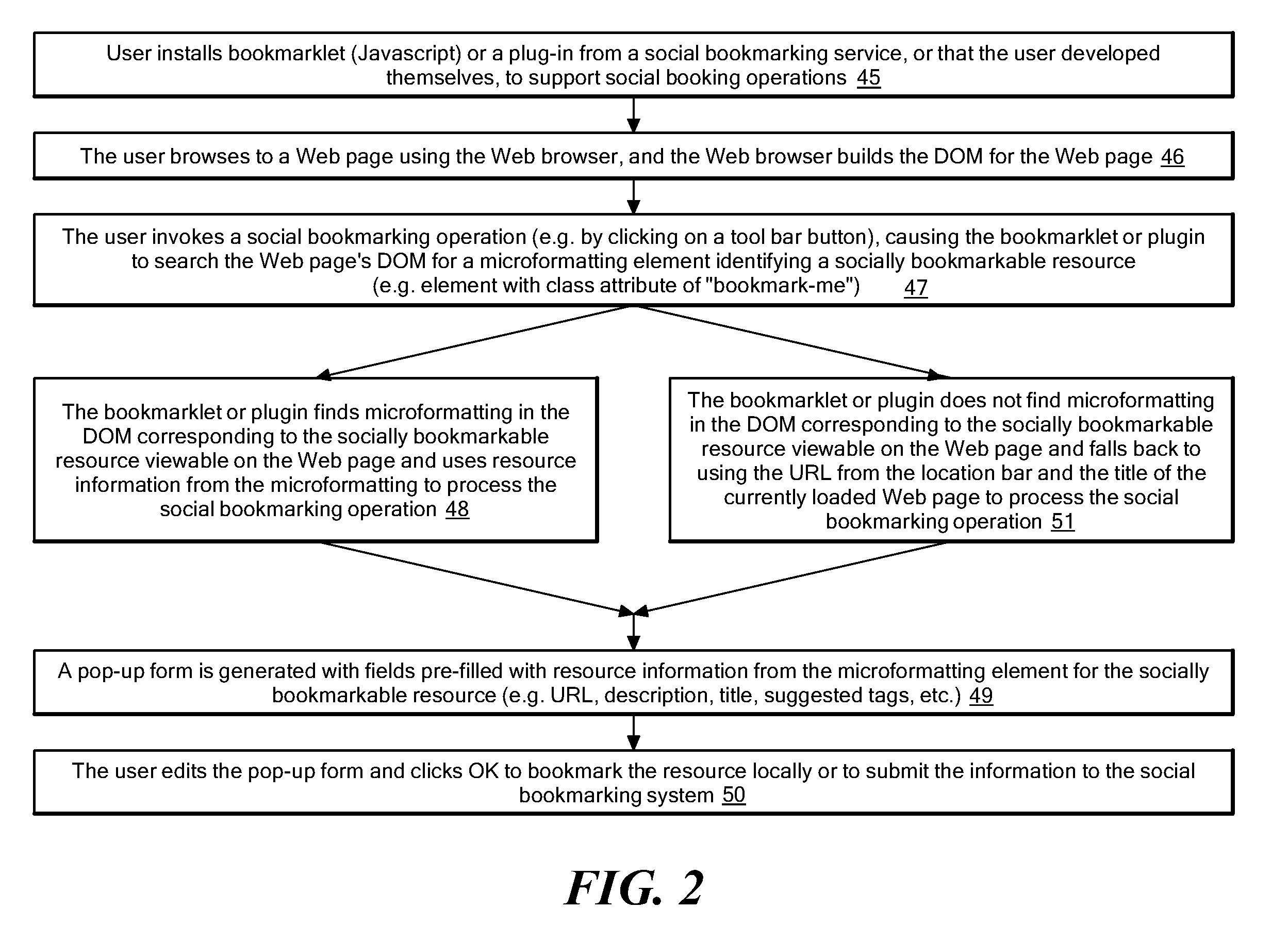Method and system for social bookmarking of resources exposed in web pages that don't follow the representational state transfer architectural style (REST)
- Summary
- Abstract
- Description
- Claims
- Application Information
AI Technical Summary
Benefits of technology
Problems solved by technology
Method used
Image
Examples
Embodiment Construction
[0022]FIG. 1 is a block diagram showing components in an illustrative embodiment of the disclosed system. As shown in FIG. 1, a Client Computer System 10 is associated with and used by a Local User 12. A Graphical User Interface 14 is provided to the Local User 12, in part through execution of a Bookmarklet or plug-in 16 that provides one or more social bookmarking operations to the Local User 12. The Graphical User Interface 14 may be any specific type of interactive user interface. The Graphical User Interface 14 may be navigated using any specific type of user interface device provided as part of the Client Computer System 10, such as a computer keyboard or mouse, and / or using voice commands or the like.
[0023]The Bookmarklet or plug-in 16 may, for example, be made up of JavaScript and / or other appropriate scripting language. When triggered, the Bookmarklet or plug-in 16 accesses the Document Object Model (“DOM”) 18 of the currently loaded Web page in order to generate one or more...
PUM
 Login to View More
Login to View More Abstract
Description
Claims
Application Information
 Login to View More
Login to View More - R&D
- Intellectual Property
- Life Sciences
- Materials
- Tech Scout
- Unparalleled Data Quality
- Higher Quality Content
- 60% Fewer Hallucinations
Browse by: Latest US Patents, China's latest patents, Technical Efficacy Thesaurus, Application Domain, Technology Topic, Popular Technical Reports.
© 2025 PatSnap. All rights reserved.Legal|Privacy policy|Modern Slavery Act Transparency Statement|Sitemap|About US| Contact US: help@patsnap.com



